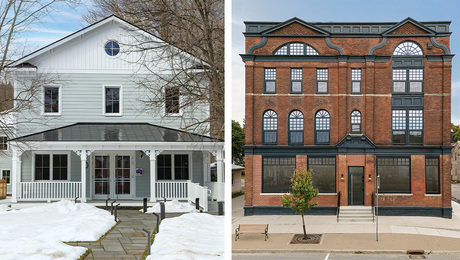Hello my name is Mike.
I’m looking for some help with my enclosure design on my personal house here in north central Florida. I live in climate zone 2A.
Wall assembly from inside out:
1/2″ Gyp board with plaster finish
2×6 studs/R-19 batt cavity insulation
7/16” Zip wall sheathing (air and water control layer)
1.5” @R-6.3 Rockwool Exterior insulation
1/2” plywood battens (rainscreen)
Hardie lap siding
Roof assembly from inside out:
1/2″ Gyp board with plaster finish
2×4 purlins to run perpendicular to roof rafters
R-13 batt cavity insulation
2×12 rafters
R-38 batt cavity insulation
5/8” plywood sheathing (seams taped) with a breathable underlayment such as Deck-Armor or a traditional felt so that I maintain a semi vapor open assembly
1.5” @R-6.3 Rockwool Exterior insulation. According to the FBC Table R806.5 I am required to have a minimum of R-5.
1x purlins on the flat to create a rainscreen gap. They will also run past the edge of the roof to frame out the roof eaves and to the ridge to a ridge vent
5/8” plywood roof sheathing with fully adhered roof underlayment
Synthetic cedar shakes such as “https://www.cedur.com/”
Questions:
For my wall assembly is it preferable to dry in both directions and use rockwool or is it preferable to dry inward only and use polyiso or similar? I understand that since I have a “reservoir cladding” and see more than 20” of rainfall per year I am at risk of condensation from inward vapor drive. My issue is if I go with EPS for example I essentially create a vapor barrier when it is more than 1” thick (I think) and it is more hospitable to insects. Which option do you think is best here?
Does my roof assembly work? Does it make sense to have my roof assembly dry in both directions since I have the rainscreen? Is there any added value in this or should I just make a compact roof and remove the rainscreen gap? Any changes you recommend? Part of my confusion here is because it seems like the panel of guys from the “The UnBuild It Show” (https://www.youtube.com/watch?v=2naF-jjVdwc) are saying we should do these types of assemblies when you have a cathedral roof.
How long should I expect the underlayment on the structural sheathing to last? Do you think I will ever need to replace it during the life of the structure?
Does anyone have any installation techniques they can recommend to keep the batt insulation from “sliding” down the high-pitched roof? My local building official has commented on my preliminary design that he needs to see some details that would prevent this from happening.
Any other feedback is greatly appreciated!
Thanks for your help with this!


















